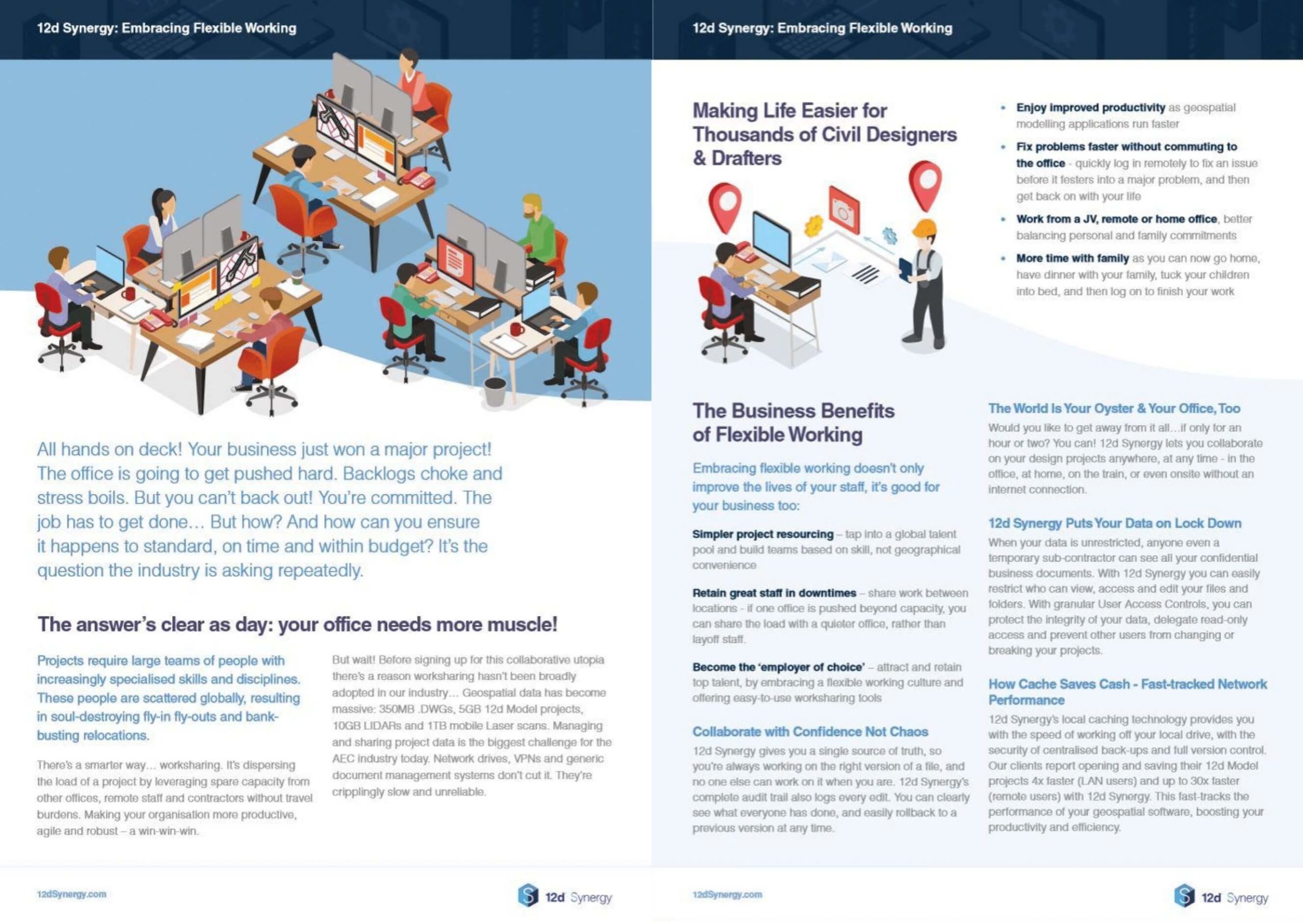Are You Seeing the Benefits of Flexible Working?

Are you seeing the benefits of flexible working? Or is it creating chaos?
Worksharing and collaboration are being held up as the great new way of working. In fact they’re nothing new. Worksharing even used to be a dirty word: making employees share jobs to limit unemployment growth during recessions. It meant less pay. The employees would have their lifestyle to meet the confines of their new role.
Now, it’s about flexibility. Staff may want to work only certain days, or need to do specific shifts that are outside regular office hours. You may have remote staff in different time zones. Or someone with specialist skills overseas. Worksharing enables everyone to work when they can, opening up opportunities as people’s physical location becomes less relevant.
At 12d, we’ve seen clients gain big benefits from having flexible working environments. There’s often a dramatic decrease in expenses relating to relocating staff and general administrative duties, as well as improved morale. Overall benefits include:
- Distributing resources as required.
- Leveraging specialist skills from a geographically dispersed workforce.
- Reducing travel costs and relocation costs.
- Improving work life balance.
The problem is that while worksharing is great, it can quickly get disorganised.
Distance shouldn’t mean costly delays
Let’s say there is a small project team working on a dam in Tasmania. The team would share documents, data and lean on each other to get the project completed. A dam project would most likely require some 2d modelling, but what if there aren’t any 2d modellers in the office? The person with the skills you need turns out to be in Perth.
The traditional process would require this 2d modeller to temporarily relocate or fly-in-fly-out as required.
On the business side of things this process is an expensive burden on the project budget. The relocation and fly-in-fly-out process also has a dramatic effect on the work-life balance of team members, and this is especially felt by those with families.
So why not have the colleague work remotely?
He or she can simply work on the relevant files in Perth, and transmit them back to base. While it’s a great idea, it can quickly turn into disaster.
As clients put it:
“We had multiple copies of the data that were uncontrolled.” “One person would work on something back here in the office, while somebody else was working on the same version at another location. We’d get two copies and have to try and figure it out. There was no integrity to our data.”
Collaboration vs disorganisation
If you rush into worksharing without setting up a proper system, it can quickly devolve into chaos. Flexible working needs a re-think of how people are going to communicate and collaborate, if they’re not working side-by-side in the same office.
Some of the problems we’ve heard about include:
- Inability to access documents stored locally in different offices.
- Emails only sent to certain team members.
- Not knowing where a remote colleague has filed something.
- Overwriting someone else’s edit in a project.
- Sharing the wrong version of a file.
- Cost and time of sending large project files between offices.
What you really need is a single source of truth for all emails, documents and data.
Luckily, there’s now technology that does this. It makes worksharing much more efficient by using a “check in/check out” system to ensure data integrity, and that there aren’t endless duplicate of different versions of files in different locations.
Software can also use intelligent data transfer to reduce the amount of data that needs to be sent over the internet. One company had team members in a remote office with poor internet connectivity. Just accessing a 200mb file could take 15 minutes, which amounted to hours of wasted time each week. The company estimates that this cost tens of thousands of dollars in lost time every year.
So let’s go back to the example of the Tasmanian dam project.
With modern technology and proper processes put in place, there is no need for this team member to physically be in the office in Tasmania. With the appropriate systems, the project can leverage specialist skills regardless of people’s physical location. The 2d modeller can collaborate with the team in Tasmania just as if they were physically there, but return home every day.
There’s no confusion, lost files. Just all the benefits of worksharing and collaboration, with none of the chaos.
Download our e-book to learn more.


Author